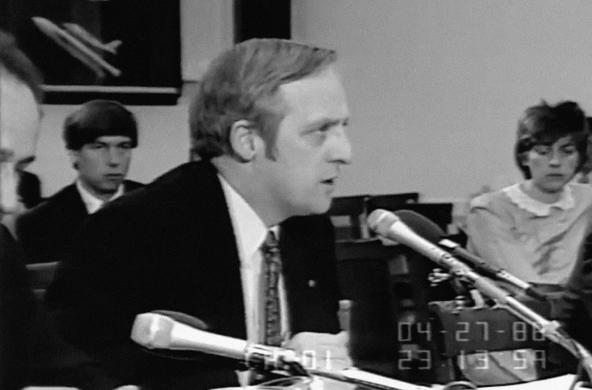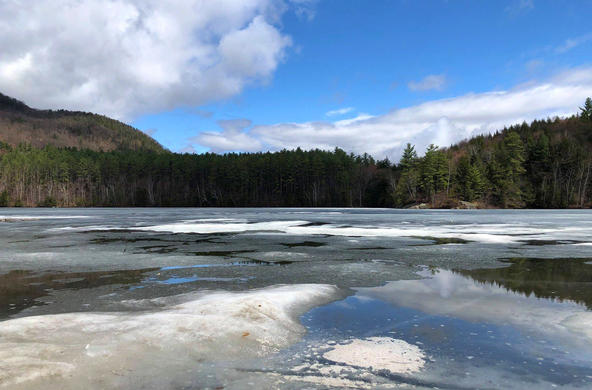Gene Likens, founder of the Cary Institute, has been selected for the 2019 Benjamin Franklin Medal in Earth & Environmental Science for his work on acid rain.
Impatient with the field of chemistry's progress in developing Earth-friendly manufacturing techniques, Frances H. Arnold exploited the power of the best chemist there is: nature.
After physicians had largely given up hope of fighting cancer by revving up a patient's immune system, James P. Allison discovered that the key was to take off the brakes.
Armed with water-quality measurements from New Hampshire's White Mountains, Gene E. Likens left the confines of his laboratory to warn Congress of a problem no one else in the United States saw coming: acid rain.
The three are among the eight newest winners of awards from the Franklin Institute, to be announced Monday and presented at a ceremony in April. Two of the eight, Arnold and Allison, are receiving another big honor Monday: the Nobel Prize.
The institute has been recognizing achievement in the sciences and business since the 1820s. If there is a common theme among the eight newest winners, it is a willingness to challenge established thinking.
Arnold, who is getting the Nobel in chemistry and the Franklin Institute's Bower Award for achievement in science, started shaking up her field in the late 1980s.
Biochemists were using new genetic tools to learn how enzymes and other protein molecules carried out the chemical reactions of life. Arnold, a chemical engineering professor at the California Institute of Technology, was more interested in putting those molecules to work.
"I am an engineer," she said. "I wanted to make better proteins, and waiting around for scientists to understand them better was not going to work for me."
A Pittsburgh native and graduate of Princeton University, Arnold developed a technique that has come to be known as directed evolution. Briefly, she took the genetic instructions for a particular protein – say, an enzyme that was able to break down fat – and introduced a variety of random mutations. She then measured which, if any, of the newly mutated enzymes broke down fat even better. Upon identifying the winner, she repeated the process – randomly mutating its genes for generation after generation to see if she could improve nature's chemistry even more.
The process worked so well that it is now widely used to make laundry detergents, pharmaceuticals, and a host of other valuable chemicals, generally in a greener and more efficient fashion than before. In 2005, she co-founded a company, Gevo, which has used the renewable process to make jet fuel for the Army. Her Bower Award comes with a $250,000 prize.
At about the same time Arnold was perfecting her approach, fellow Nobel winner Allison was studying a molecule called CTL4-A, found on the surface of immune-system soldiers called T cells. Other scientists had proposed that the molecule could activate these cells, sort of like a gas pedal. But in 1996, Allison's team proved the opposite: CTL4-A was a brake. And by using an antibody to turn off that brake, the researchers showed that T cells would seek out and destroy cancer cells in mice.
Initially, others were skeptical that it would work in humans.
"It only took about three years to get anyone to take it seriously," recalled Allison, now at MD Anderson Cancer Center in Houston. "It was pretty frustrating, and I just kept going because I was just so sure."
His work led to the first in a new class of drugs called checkpoint inhibitors, approved in 2011 by the U.S. Food and Drug Administration. Sold as Yervoy by Bristol-Myers Squibb, it can have serious side effects but has prolonged the lives of thousands of patients with advanced melanoma. Allison, a harmonica player who has jammed with Willie Nelson, is getting the Nobel Prize in medicine and a Franklin award in life science.
Likens, an ecologist at the Cary Institute of Ecosystem Studies, was at Cornell University in 1972 when he sounded the alarm on acid rain. Some New England lakes had become so acidic that fish were unable to survive, and research by Likens and colleagues pointed the finger at pollution from coal-burning power plants.
The phenomenon had previously been documented in Europe, but the findings were a surprise to many in the United States a decade after the passage of the first Clean Air Act.
Before long, Likens agreed to brief politicians and other policy makers in Washington. Scientists often are reluctant to wade into matters of policy, preferring to let others act on their results, and Likens felt the same way at first. He once told Science magazine that when asked his opinion on a policy question, he strove to keep the two realms separate.
"I will say, 'I'm going to take off my science hat and give my opinions as a person,'" he said.
The other winners of Franklin Institute awards include:
Indra K. Nooyi, Bower Award for business leadership. A longtime executive at PepsiCo, Nooyi was instrumental in taking the food and beverage giant beyond sugary soda and snacks, guiding its 1998 acquisition of Tropicana and its 2001 merger with Quaker Oats Co. She was named chief executive officer of the corporation in 2006, a role she held until October.
Marcia K. Johnson, computer and cognitive science. A pioneer in the study of memory, the Yale University psychology professor has researched the cognitive deficits associated with amnesia, frontal brain damage, and aging. She also studies how human memory is subjective and changeable.
Eli Yablonovitch, electrical engineering. A professor at the University of California, Berkeley, Yablonovitch is a prominent electronics researcher who is known for boosting the efficiency of solar panels and for his innovations in photonics -- harnessing the transmission of light for use in telecommunications, computers, and other cutting-edge applications.
John A. Rogers, materials engineering. Rogers is being recognized for developing flexible and stretchable electronic circuits for use in wearable devices. Among his inventions at Northwestern University is a patch on the skin that measures the loss of fluid and electrolytes during exercise. He and colleagues also have developed wearable electronic circuitry to monitor a person's exposure to pollution and ultraviolet light.
John J. Hopfield, physics. The Princeton University professor and Institute for Advanced Study scholar is acclaimed for applying math and theoretical physics to solve questions in neuroscience and genetics. In one paper, he explored how computational networks might be used to solve Sudoku puzzles. Whimsically, he invited readers to skip around to find the parts they found most interesting, writing: "No one reads a complex scientific paper from beginning to end."






